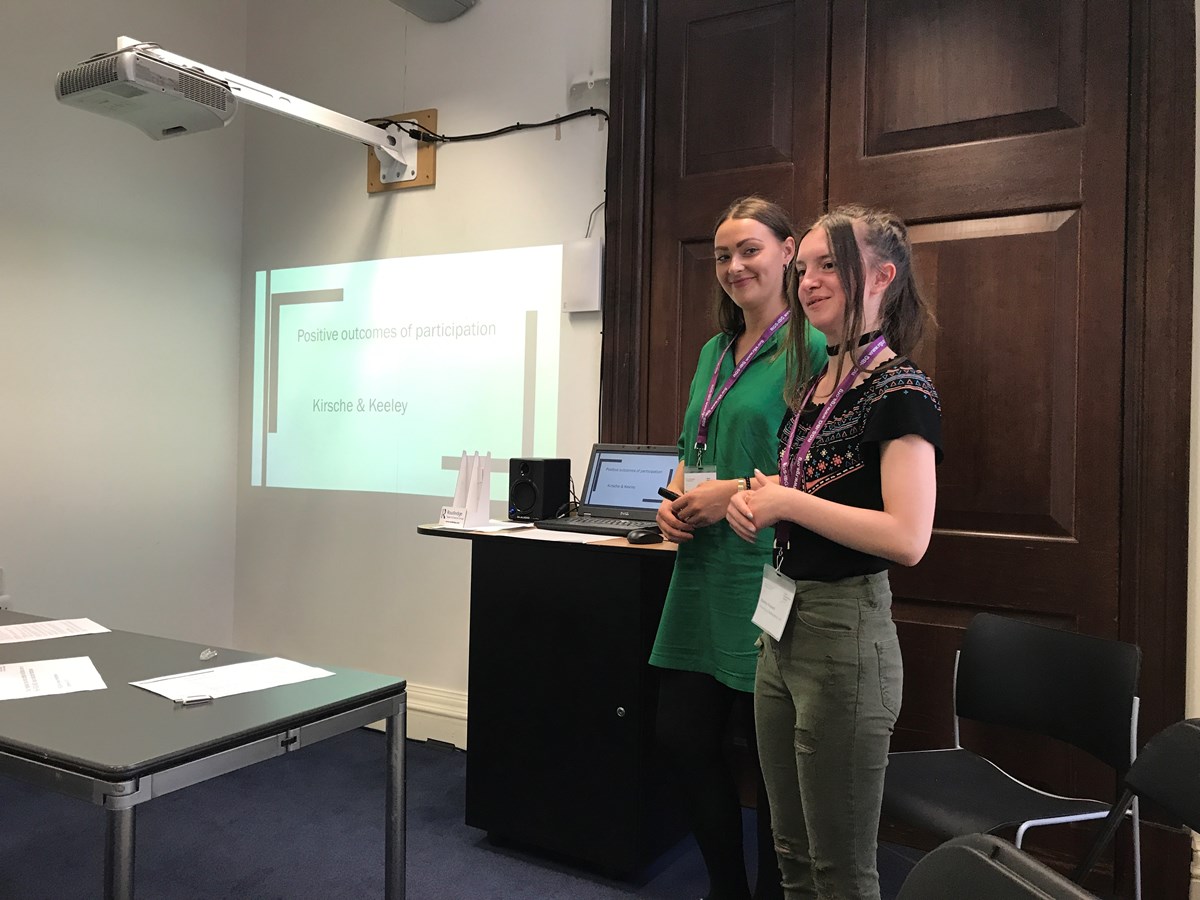This month the Contextual Safeguarding Team held two sessions at the Royal Geographical Annual Conference on ‘Contextual safeguarding: Approaches to exploitation and abuse of children and young people beyond the home’. The two sessions were sponsored by the Geographies of Children, Youth and Families Research Group and aimed to bring together practitioners with academics to talk about new research and approaches to working with children and young people. Holding the sessions at a geography conference provided an excellent opportunity to talk about some of the ways that different spaces and places are important to how we understand and respond to different forms of abuse and exploitation
The presenters demonstrated the importance of approaches to child protection that understand the context of where abuse occurs, presenting a number of clear links in line with this.
Firstly, the presentations highlighted the role of research safeguarding. The day began, for example, with my presentation on how geographical research could support practitioners to learn more about the different spaces young people spend time in and how to capture this in assessments. This notion was later built on by two members of the Youth Research Advisory group (YRAP), Kirsche and Keeley, whose talk highlighted how participatory methods in research are effective and value young people’s experience and knowledge. Kirsche and Keeley spoke about their own experiences on two studies – Be Healthy and Marginal Gains – to demonstrate how there are many ways in which young people can inform and strengthen research and practice through participation. They then provided advice on how best to engage and value young people’s voices through research.
Secondly, the conference addressed the role of agency and choice in how young people make decisions and how this impacts the support they receive. In the paper presented by Sarah Lloyd (University of Huddersfield), for example, the language around choice was shown to be associated with blame. This notion was presented by looking at the differences between how social workers talked about sexual abuse of young people in the home versus outside of it. Sarah's presentation can be found here.
The idea of choice and agency was also present in the work of Caroline Andow from the University of Winchester and Ben Byrne from Surrey County Council, who provided insight into the different routes young people take into different types of secure accommodation. Based on case reviews they had carried out of 69 young people in secure accommodation, Caroline and Ben found that young people following the youth justice and welfare routes had similar backgrounds, experiences and needs, but that factors such as gender were likely impact the type of secure accommodation they ended up in
Korinna McRoberts (University of Applied Sciences, Potsdam) also looked at how agency is limited, specifically by the institutionalisation of childhood sexuality. Using the UN convention on the Rights of the Child her paper highlighted the need for legislation that recognises the multiple ways that young people live and their rights in different places.
Thirdly, the presentations explored safeguarding in different places and how we create environments that challenge abuse and protect young people. For example, Joanne Walker (University of Bedfordshire) presented new research on harmful sexual behaviour in schools to highlight how young people are adapting to unsafe environments by developing their own techniques of safe-keeping. She concluded by questioning the appropriateness of male-dominated environments and emphasised the role of inspectors to ensuring safety for all young people.
Carlene Firmin (University of Bedfordshire) focused on an alternative space and environment; that of public transport. She explored the potential use of using transport data, bus route journey data in particular, to advance the safeguarding of young people on public transport networks. Presenting findings from a large data set consisting of 11 million bus journeys by young people she highlighted the opportunities data sets have for understanding how young people are vulnerable to abuse in different places and opportunities for engagement and intervention.
The conference provided a diverse array of insights around contextual approaches to safeguarding, with key themes that provide important learning for practitioners. By engaging in research and participatory methods and by improving our understanding of young people’s interactions in contexts and environments, practice can be strengthened and improved.

